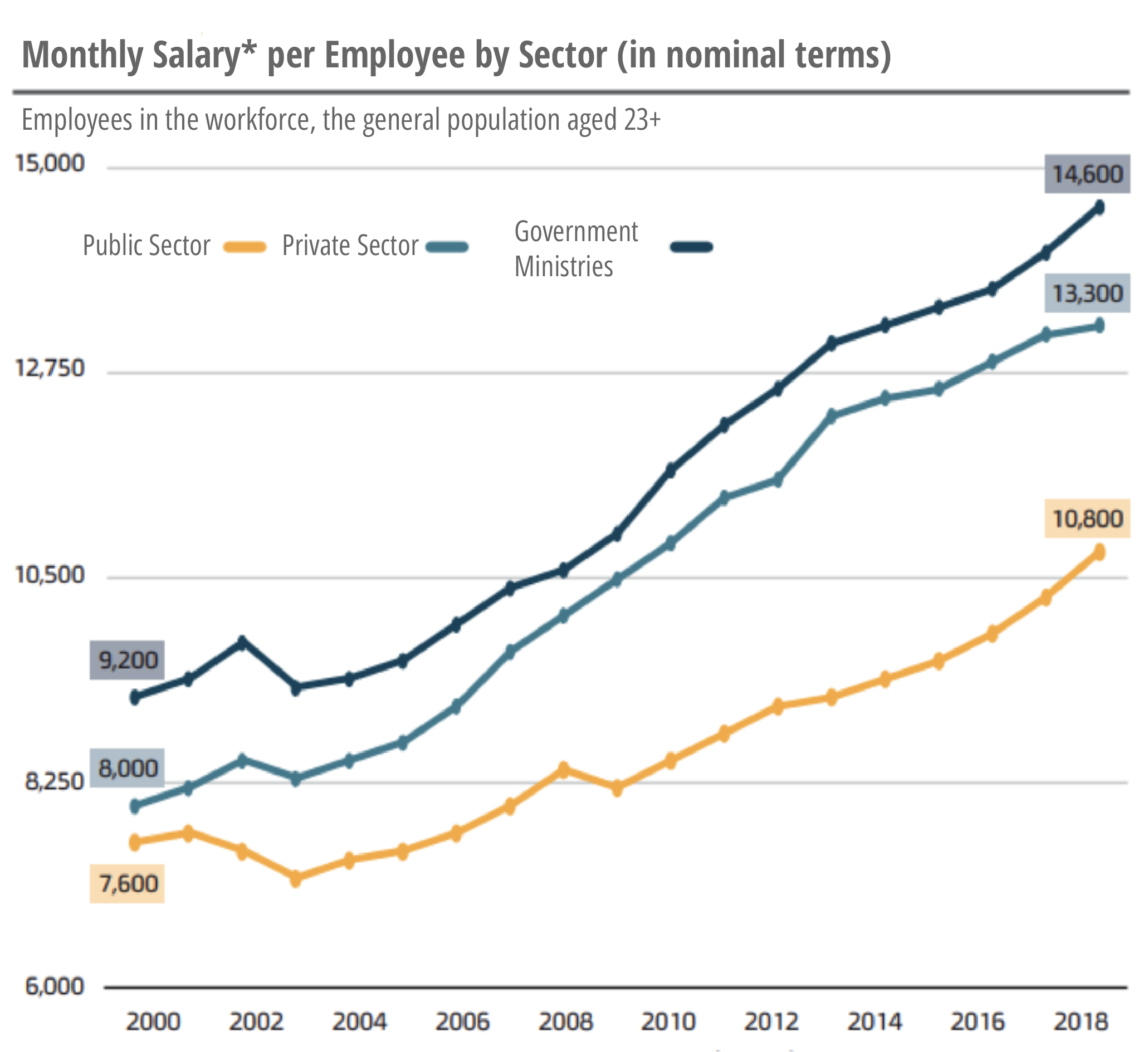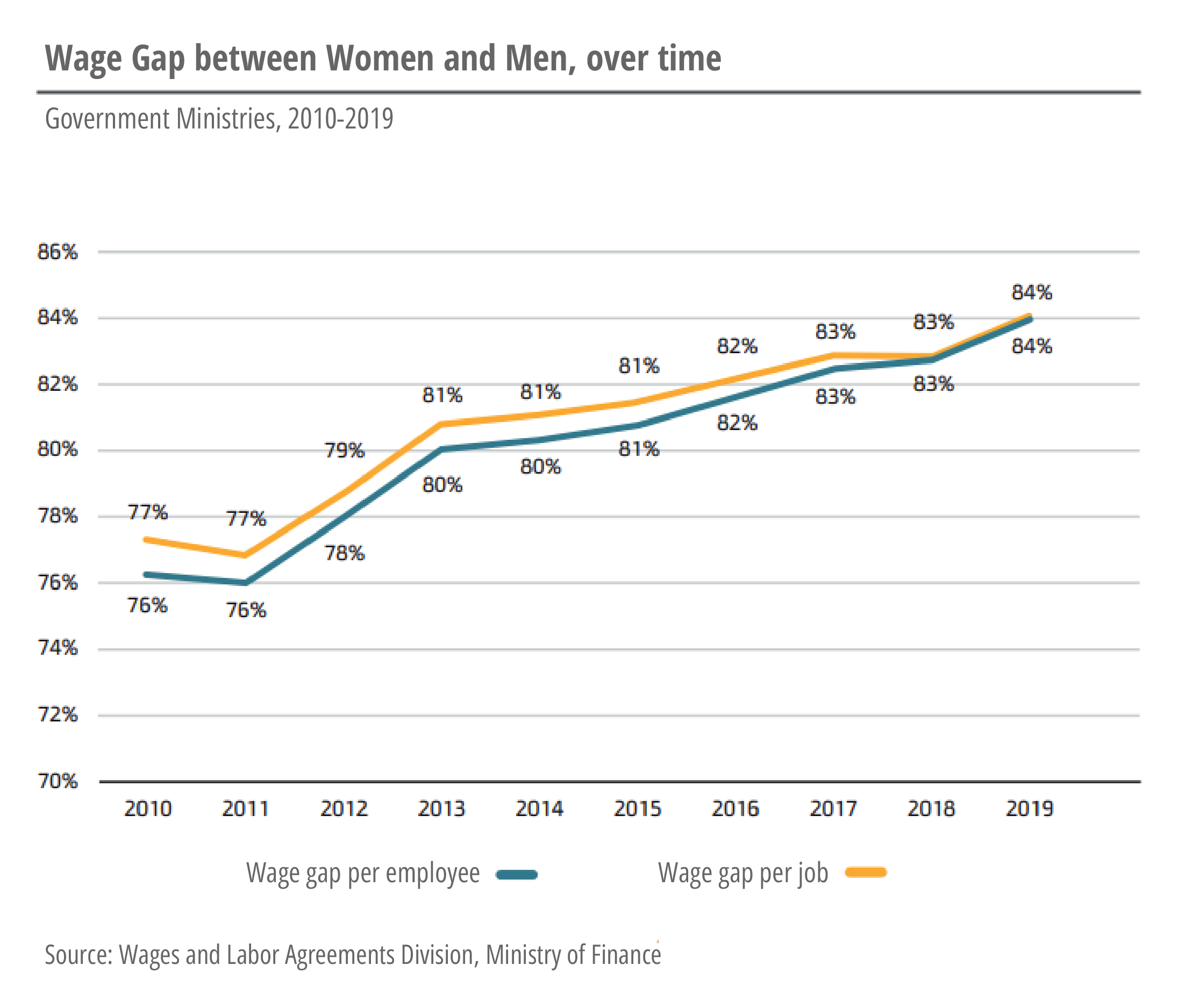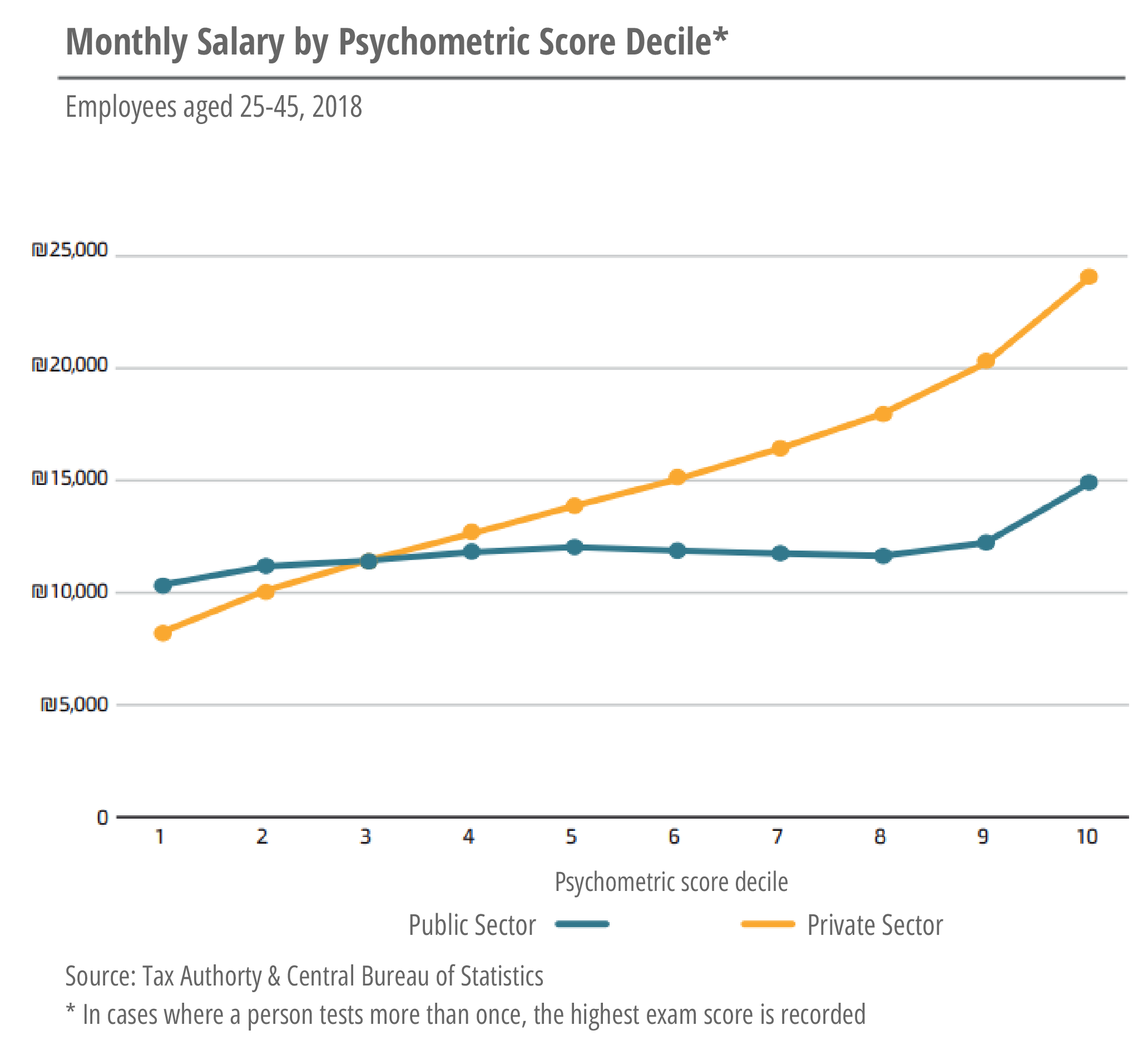
Once a year, the Ministry of Finance publishes its public sector salary report, creating something of a field day for Israeli financial press. It seems that after dealing with COVID-19 for the past year, we should know how much we need our nurses, public works, policemen and teachers. Sadly, some would like to get a highly functioning public service that works for free.
The favorite hot-take is a comparison of wages in the public and private sectors, often implying that average salaries for government employees are exorbitantly high. This, however, is a problematic comparison, to say the least.
The public and private sectors are two very different environments. As one example, 41% of public sector employees are academics, compared with only 17% in the private sector. The public sector is also far smaller than the private sector – approximately a quarter of the size in terms of number of employees. Many, if not most of its employees, are highly trained professionals. It lacks the hundreds of thousands of cashiers, cleaners and other low-wage employees which make up much of the private sector.

Advertising the wage differences between the two sectors without mentioning these and other key differences is not only manipulative, but points to an attempt to portray both public sector workers and the public sector in general, as wasteful, corrupt and in need of “reforms”- a euphemism for spending cuts.
Relatively egalitarian, relatively inclusive
What is usually overlooked by critics is another bit of comparative data: the public sector is by far the most equal in terms of wage disparities. While inequalities certainly still exist in the public sector, they are quite simply much lower.
The average difference between the highest and lowest earning public sector employees is far lower than in the private sector. In the public sector on average, the highest earning employees earn 2.5 times more than the lowest earning employees. By comparison, highest earning employees earn 8 times more in the private sector.

The gender wage gap is also much lower in the public sector: women employed in the public sector earn on average 84% of their male counterpart’s salaries, as opposed to only 68% in the wider economy. Although it should be said that women represent much less than 50% of the public sector workforce.
34%of employees in the public sector are members of minority groups, as opposed to just 7% in the private sector.
Another misleading and manipulative use of the report can be found in the graph showing a correlation – or lack thereof – between psychometric test results and salaries in each sector.

The implied message of the graph is that it is simply outrageous that in the public sector, “smarter” individuals, seem to earn only slightly less that ostensibly “stupid” individuals. Here it seems that authors of the report do not recognize multiple intelligences and the different abilities required to fulfil different roles.The question of unequal access to education, or the broader question of whether psychometric test results should be incorporated beyond the realm of academia, is of course ignored.
We all need a well functioning public sector
If the pandemic has taught us anything at all, it is that Israel is in dire need of a functioning, efficient public sector. While it is important to reflect on questions of productivity and motivation in the public sector, it is entirely baseless to frame these questions as being justification for wage cuts.
Low wage gaps and employment security are assets. It might well be wiser to put the spotlight on high levels of inequality in the private sector, rather than criticizing the government for paying its workers too well.






